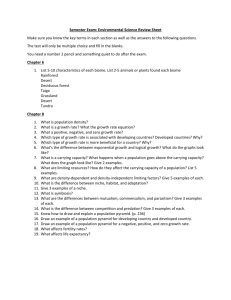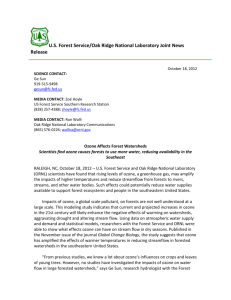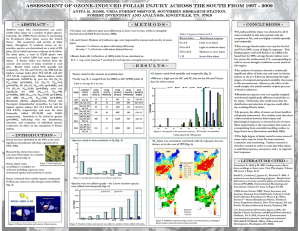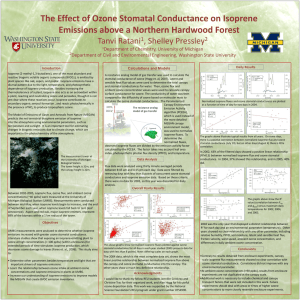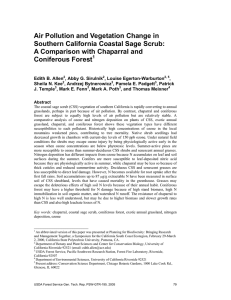Adapting Mediterranean forests to climate change and ozone
advertisement
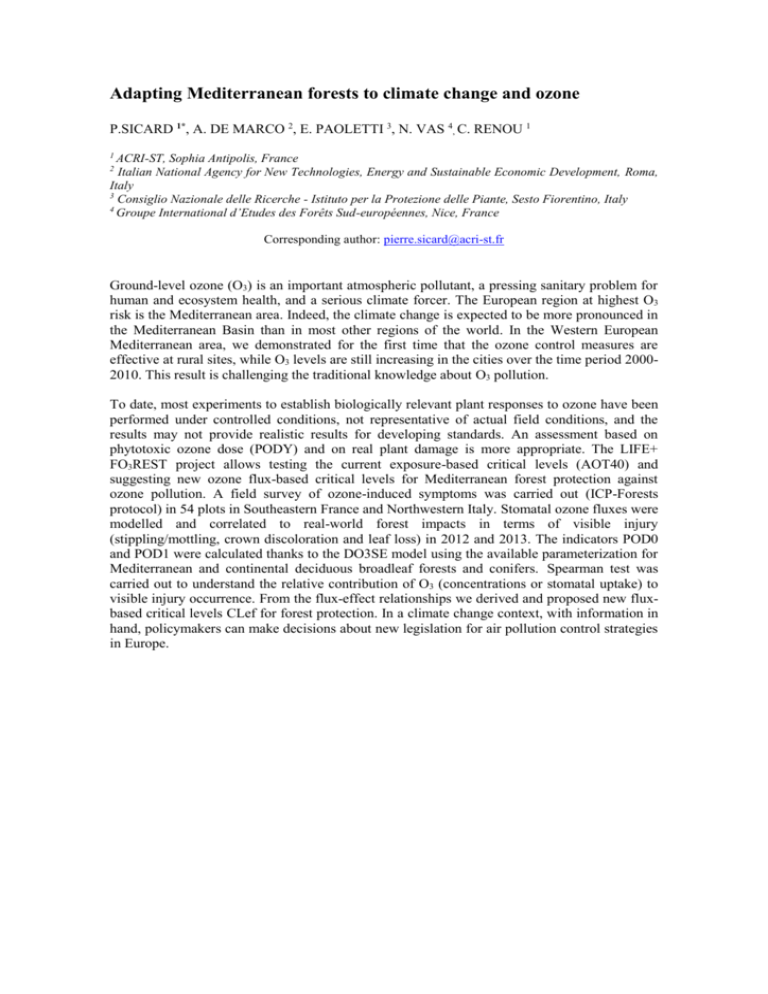
Adapting Mediterranean forests to climate change and ozone P.SICARD 1*, A. DE MARCO 2, E. PAOLETTI 3, N. VAS 4, C. RENOU 1 1 ACRI-ST, Sophia Antipolis, France Italian National Agency for New Technologies, Energy and Sustainable Economic Development, Roma, Italy 3 Consiglio Nazionale delle Ricerche - Istituto per la Protezione delle Piante, Sesto Fiorentino, Italy 4 Groupe International d’Etudes des Forêts Sud-européennes, Nice, France 2 Corresponding author: pierre.sicard@acri-st.fr Ground-level ozone (O3) is an important atmospheric pollutant, a pressing sanitary problem for human and ecosystem health, and a serious climate forcer. The European region at highest O3 risk is the Mediterranean area. Indeed, the climate change is expected to be more pronounced in the Mediterranean Basin than in most other regions of the world. In the Western European Mediterranean area, we demonstrated for the first time that the ozone control measures are effective at rural sites, while O3 levels are still increasing in the cities over the time period 20002010. This result is challenging the traditional knowledge about O3 pollution. To date, most experiments to establish biologically relevant plant responses to ozone have been performed under controlled conditions, not representative of actual field conditions, and the results may not provide realistic results for developing standards. An assessment based on phytotoxic ozone dose (PODY) and on real plant damage is more appropriate. The LIFE+ FO3REST project allows testing the current exposure-based critical levels (AOT40) and suggesting new ozone flux-based critical levels for Mediterranean forest protection against ozone pollution. A field survey of ozone-induced symptoms was carried out (ICP-Forests protocol) in 54 plots in Southeastern France and Northwestern Italy. Stomatal ozone fluxes were modelled and correlated to real-world forest impacts in terms of visible injury (stippling/mottling, crown discoloration and leaf loss) in 2012 and 2013. The indicators POD0 and POD1 were calculated thanks to the DO3SE model using the available parameterization for Mediterranean and continental deciduous broadleaf forests and conifers. Spearman test was carried out to understand the relative contribution of O3 (concentrations or stomatal uptake) to visible injury occurrence. From the flux-effect relationships we derived and proposed new fluxbased critical levels CLef for forest protection. In a climate change context, with information in hand, policymakers can make decisions about new legislation for air pollution control strategies in Europe.

